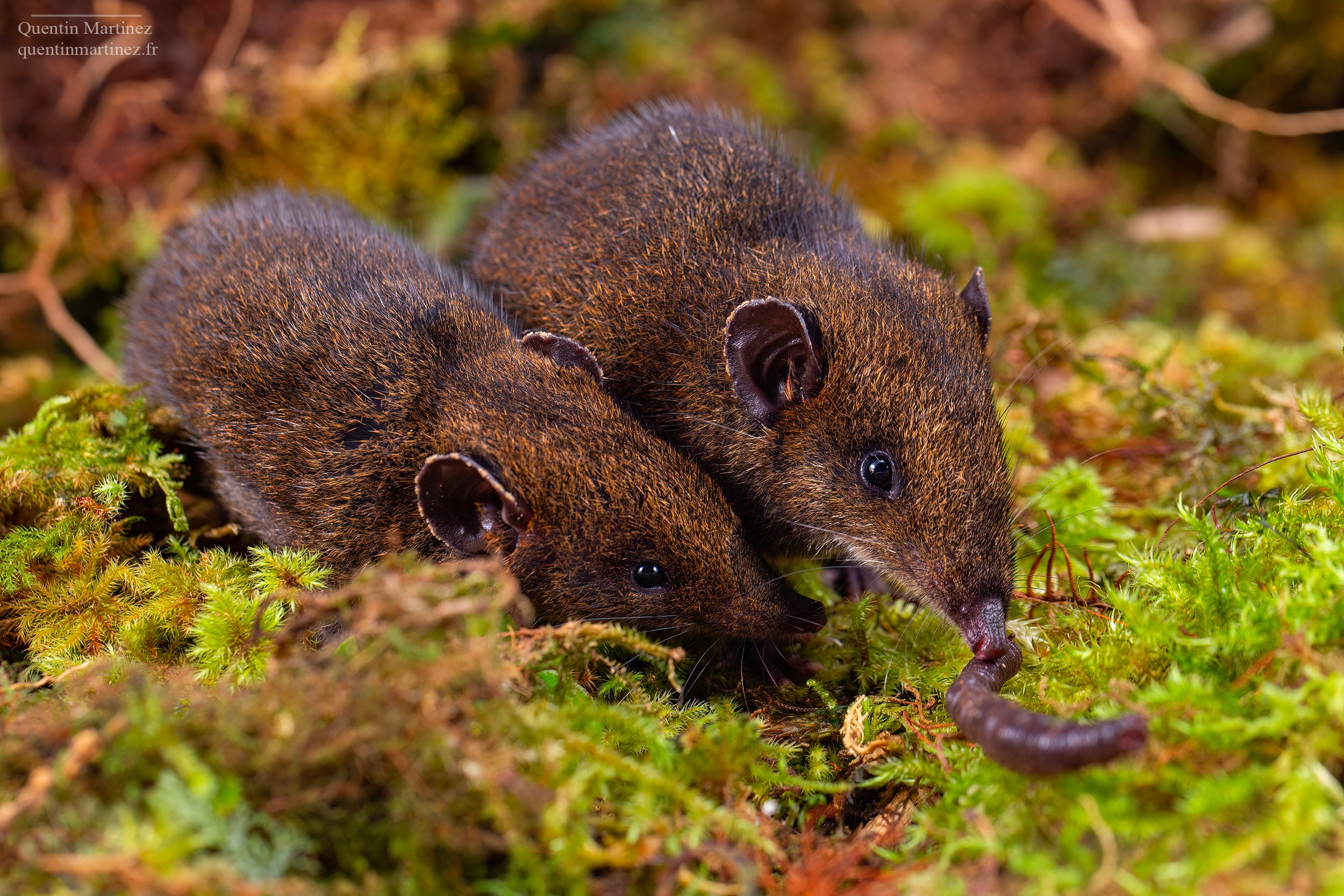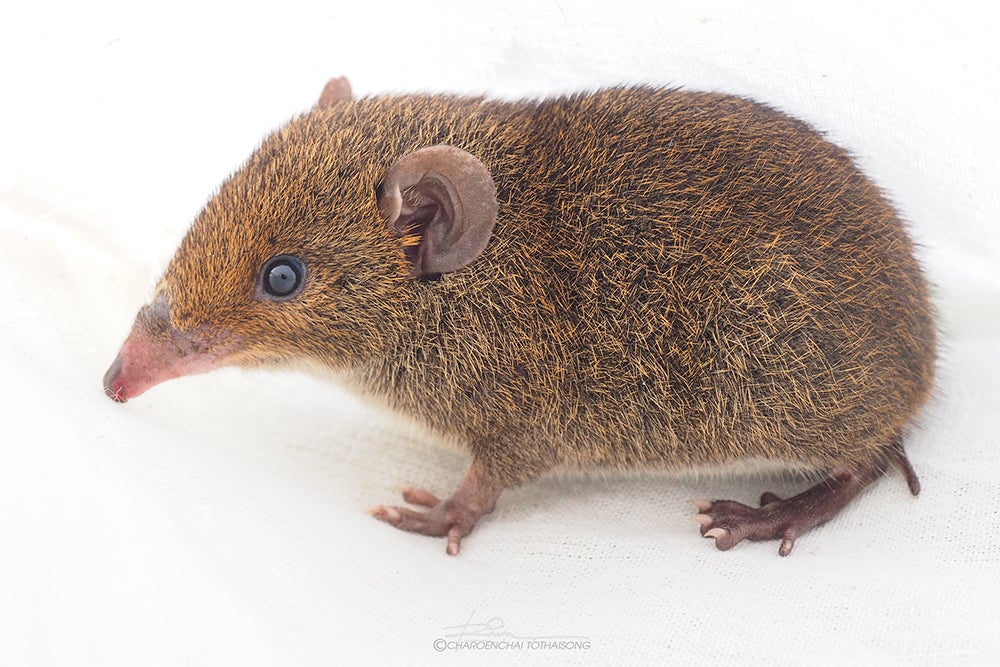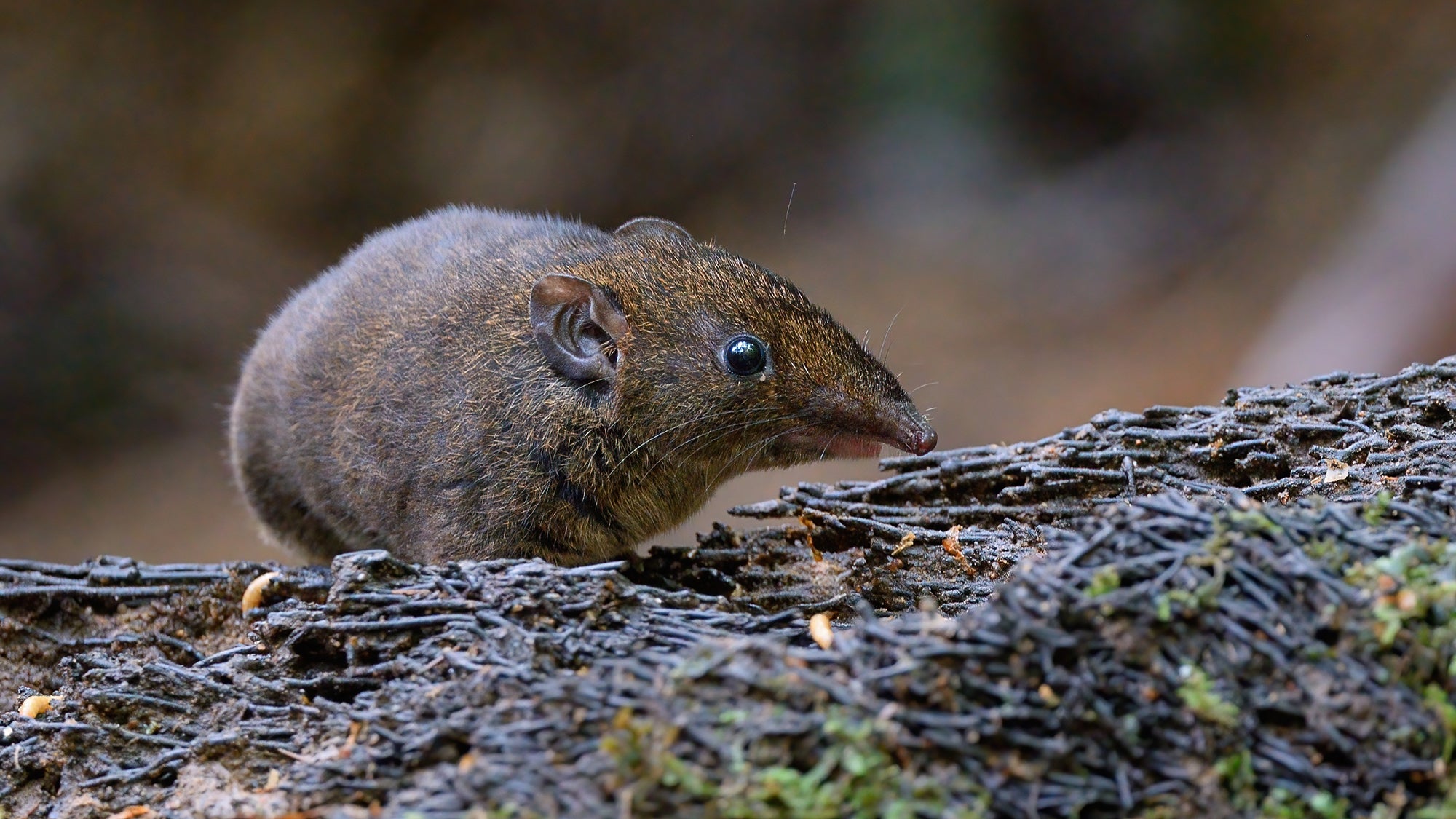The hedgehog family tree is ending 2023 by getting a few more branches. A study published December 21 in the Zoological Journal of the Linnean Society identified five new species of soft-furred hedgehogs native to Southeast Asia that were found with the help of some DNA analysis and some decades-old museum specimens.
[Related: Why Danish citizen scientists were on a quest to find the oldest European hedgehog.]
Fur instead of spines
Soft-furred hedgehogs–or gymnures–are tiny mammals that are members of the hedgehog family. Instead of being covered in spines like other hedgehogs, they have soft fur. Hedgehogs are not rodents and they have a pointy snout like their relatives. Previously, scientists believed that there were only two species, but this new study increased that number to seven.
These newly-identified species belong to a group of soft-furred hedgehogs called Hylomys that live in Southeast Asia. Two of the hedgehogs are entirely new species of soft-furred hedgehog. They are named Hylomys vorax and Hylomys macarong and both are endemic to an endangered and incredibly biodiverse tropical rainforest in North Sumatra and Southern Vietnam called the Leuser ecosystem.
“It might be surprising for people to hear that there are still undiscovered mammals out there. But there is a lot we don’t know—especially the smaller nocturnal animals that can be difficult to tell apart from one another.”
-Evolutionary biologist Arlo Hinckley
H. macarong has dark brown fur and is about 5.5 inches long. It was named for a Vietnamese word for vampire–Ma cà rồng–since the males have fang-like incisors. Further field study is needed to figure out what these fangs do, but their larger size suggests that it could have a role in sexual selection. The males also have rust-colored chest markings that may have been stained by scent glands.
H. vorax is slightly smaller at 4.7 inches long and also has dark fur. It has a black tail and a very narrow snout. It is believed to only be found on the slopes of Mount Leuser in Northern Sumatra. It was named after a description made by mammalogist Frederick Ulmer, who collected the specimens during an expedition to Sumatra in 1939. Ulmer identified it as a type of shrew in his field notes.
“They were voracious beasts often devouring the whole bait before springing the trap,” Ulmer wrote. “Ham rind, coconut, meat, and walnuts were eaten. One shrew partially devoured the chicken head bait of a steel trap before getting caught in a nearby Schuyler trap baited with ham rind.”
The other three have been promoted from subspecies up to species. A subspecies is a smaller group within a species. They are genetically distinct from other groups within that same species, but can still interbreed and produce viable offspring. These three were initially considered to be a subspecies of Hylomys suillus, but the study found enough genetic and physical differences for them to be upgraded to species. They are named Hylomys dorsalis, Hylomys peguensis and Hylomys maxi.
H. dorsalis lives in Northern Borneo’s mountains and has a dark stripe on its head that bisects its back.

H. peguensis is only 5.1 inches long with more yellow fur and can be found in many countries in mainland Southeast Asia.

True to its name, H. maxi is also on the larger end of the new species of soft-furred hedgehogs at 5.5 inches and can be found in mountainous regions on the Malay Peninsula and in Sumatra.

According to study co-author and evolutionary biologist Arlo Hinckley, soft-furred hedgehogs generally look more like a mixture between a mouse and a shrew, since they do not have the spines of their cousins’ spines. These small mammals are generally active during both the day and night and are omnivores. They likely eat a wide variety of insects and other invertebrates, and fruit if it is available.
“Based on the lifestyles of their close relatives and field observations, these hedgehogs likely nest in hollows and take cover while foraging among tree roots, fallen logs, rocks, grassy areas, undergrowth and leaf litter,” Hinckley said in a statement. “But, because they’re so understudied, we are limited to speculate about the details of their natural history.”
Hinckley is a postdoctoral fellow at the National Museum of Natural History in Washington DC and the University of Seville in Spain.
Digging in museum drawers
During his doctoral studies in 2016, Hinckley became interested in the soft-furred hedgehogs. After studying them in Borneo with study co-author Miguel Camacho Sánchez, their early genetic data and studies of many known populations in Southeast Asia suggested that there may be more species than scientists currently recognize. They began to search through natural history collections in search of specimens assigned to this group. Many soft-furred hedgehogs were only preserved skins and skulls.
[Related: Why preserving museum specimens is so vital for science.]
“We were only able to identify these new hedgehogs thanks to museum staff that curated these specimens across countless decades and their original field collectors,” said Hinckley.
The H. vorax specimen was from the Smithsonian’s collection and sat in a drawer for 84 years. H. macarong spent the last 62 years at the Academy of Natural Sciences of Drexel University in Philadelphia. Hinckley and the study’s co-authors from institutions in the United States, Switzerland, Singapore, Spain, and Malaysia ultimately assembled 232 physical specimens and 85 tissue samples from across the Hylomys group. They made detailed physical observations of and collected measurements to determine the differences in size and shape of skulls, teeth, and their fur.
They then started the genetic analysis at the Doñana Biological Station’s ancient DNA laboratory in Spain and the Smithsonian’s Laboratories of Analytical Biology. The results identified seven distinct genetic lineages and indicated that the number of recognized species in the group was about to increase.
[Related: A key to lizard evolution was buried in a museum cupboard for 70 years.]
“It might be surprising for people to hear that there are still undiscovered mammals out there,” Hawkins said. “But there is a lot we don’t know—especially the smaller nocturnal animals that can be difficult to tell apart from one another.”
The team hopes that describing these new species can expand scientific understanding and be used to conserve threatened habitats such as Northern Sumatra’s Leuser ecosystem. This region faces threats from logging, mining, the fragmentation of forests by road projects, and climate change.
“This kind of study can help governments and organizations make hard choices about where to prioritize conservation funding to maximize biodiversity,” Hinckley said.





